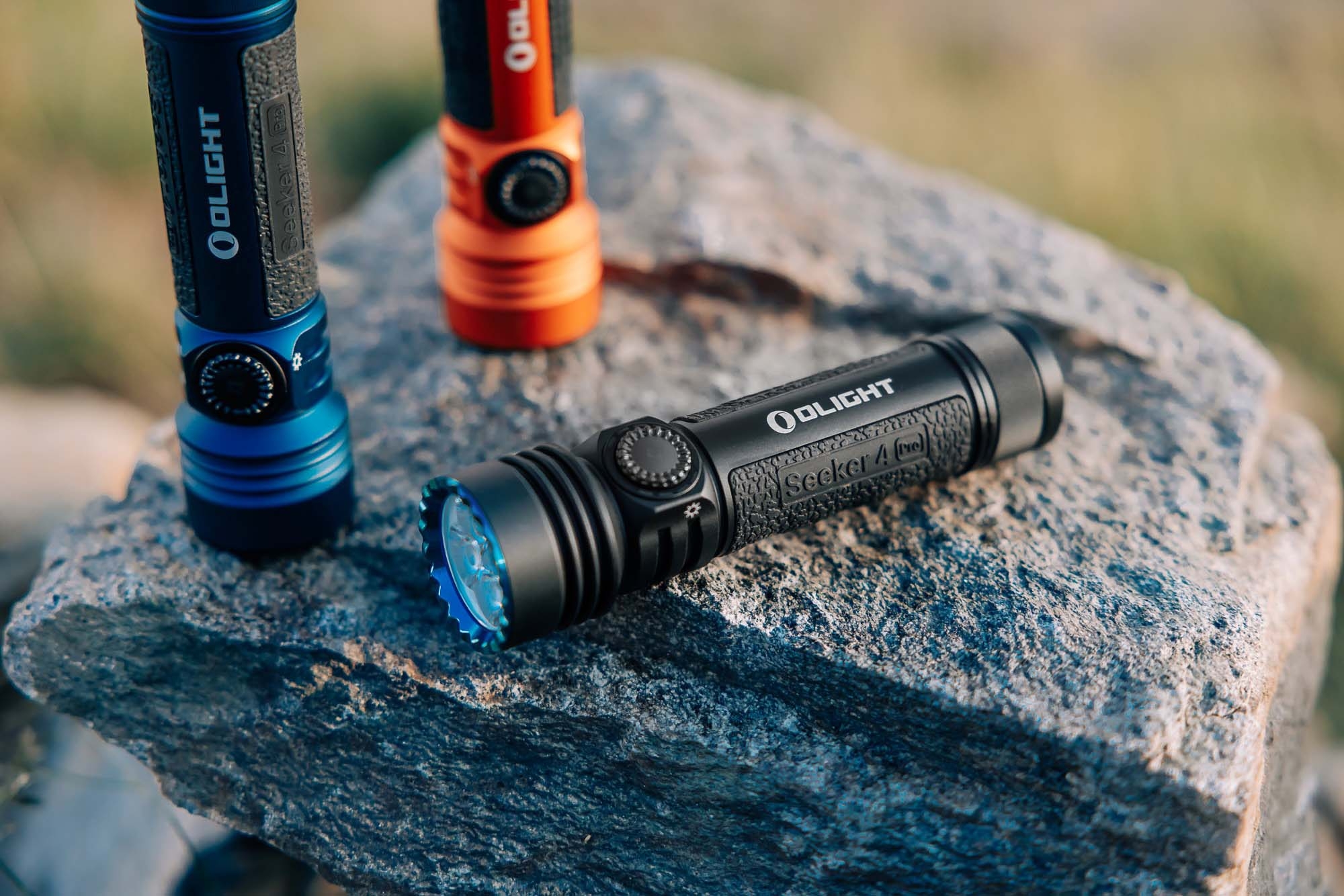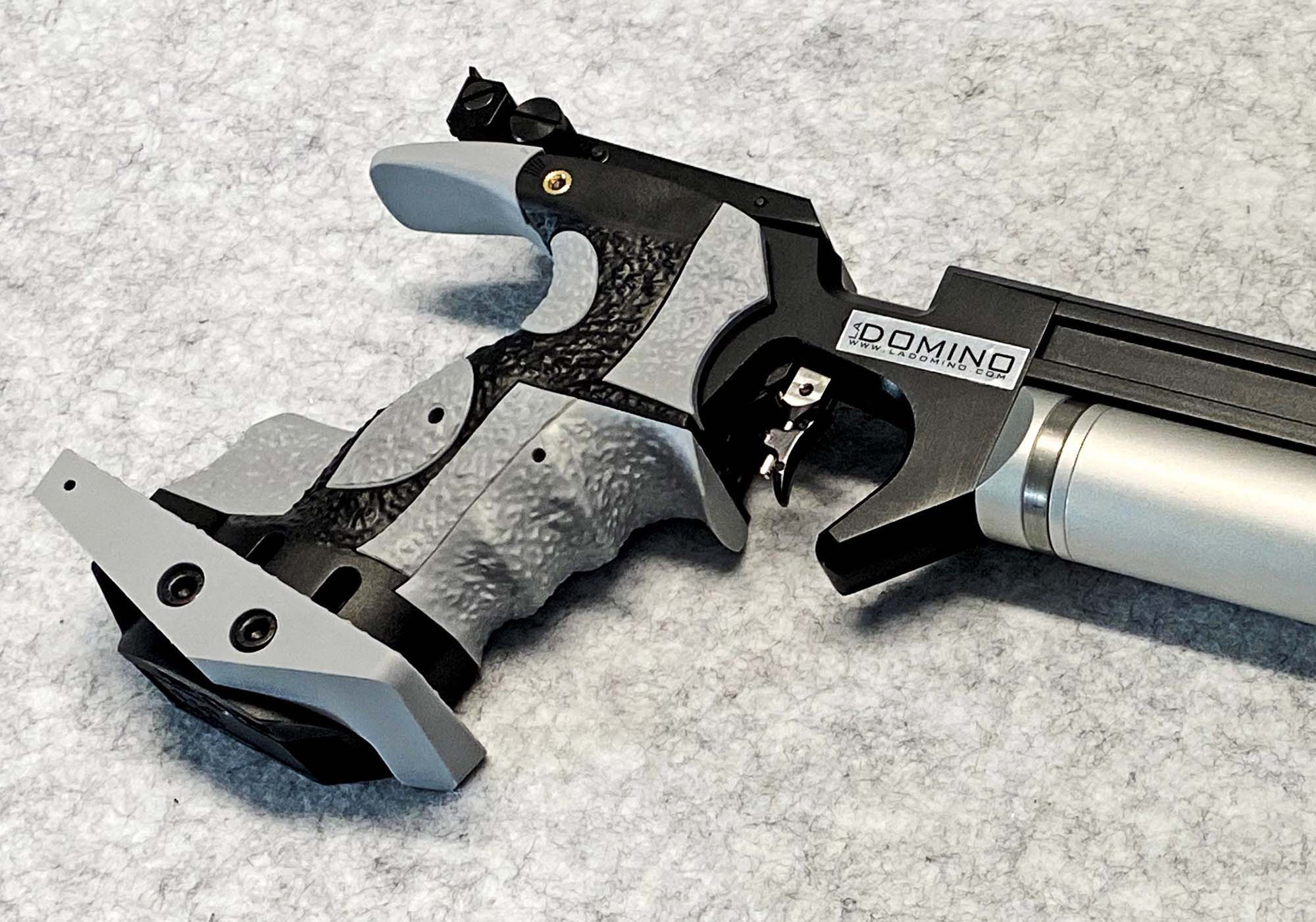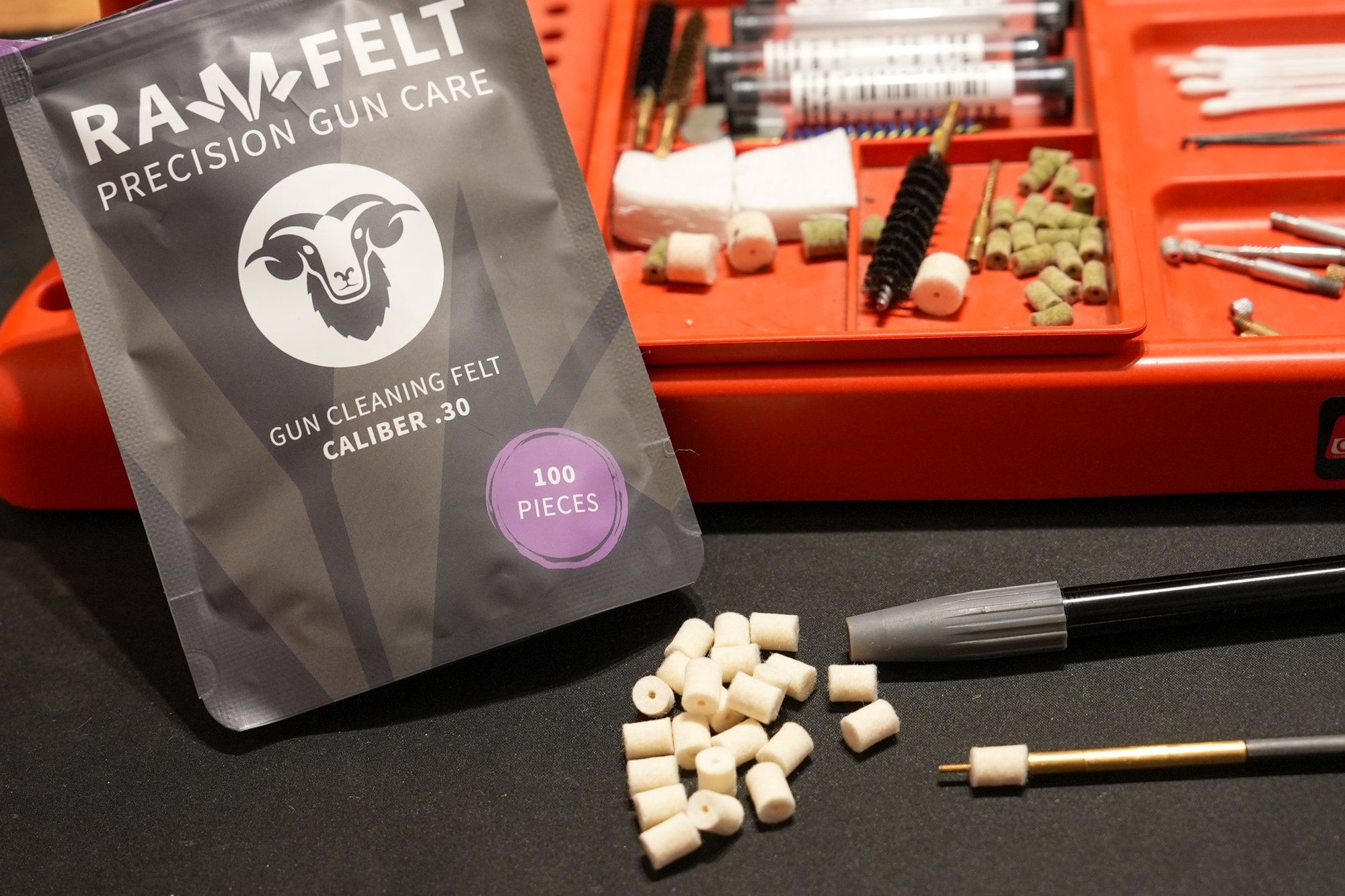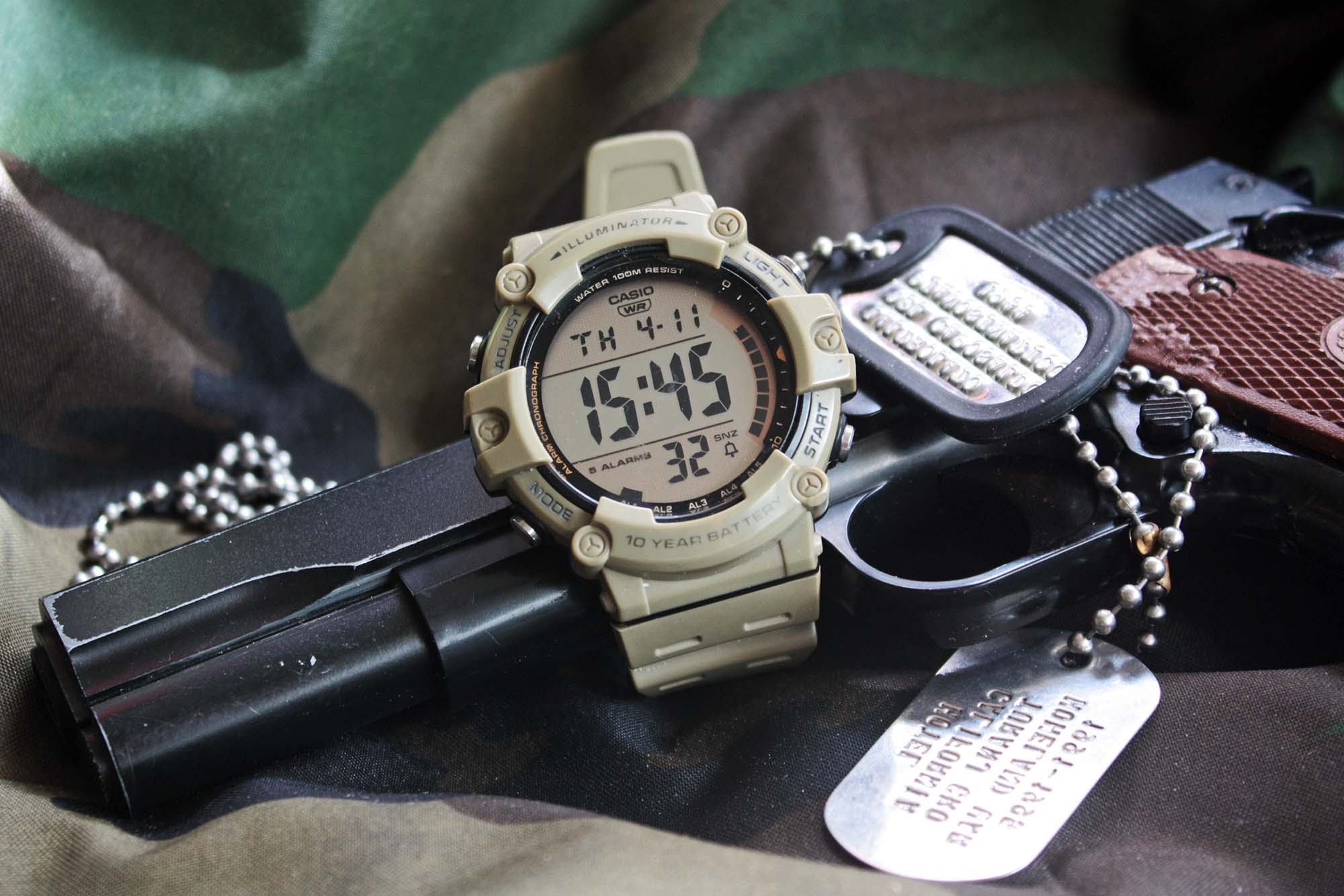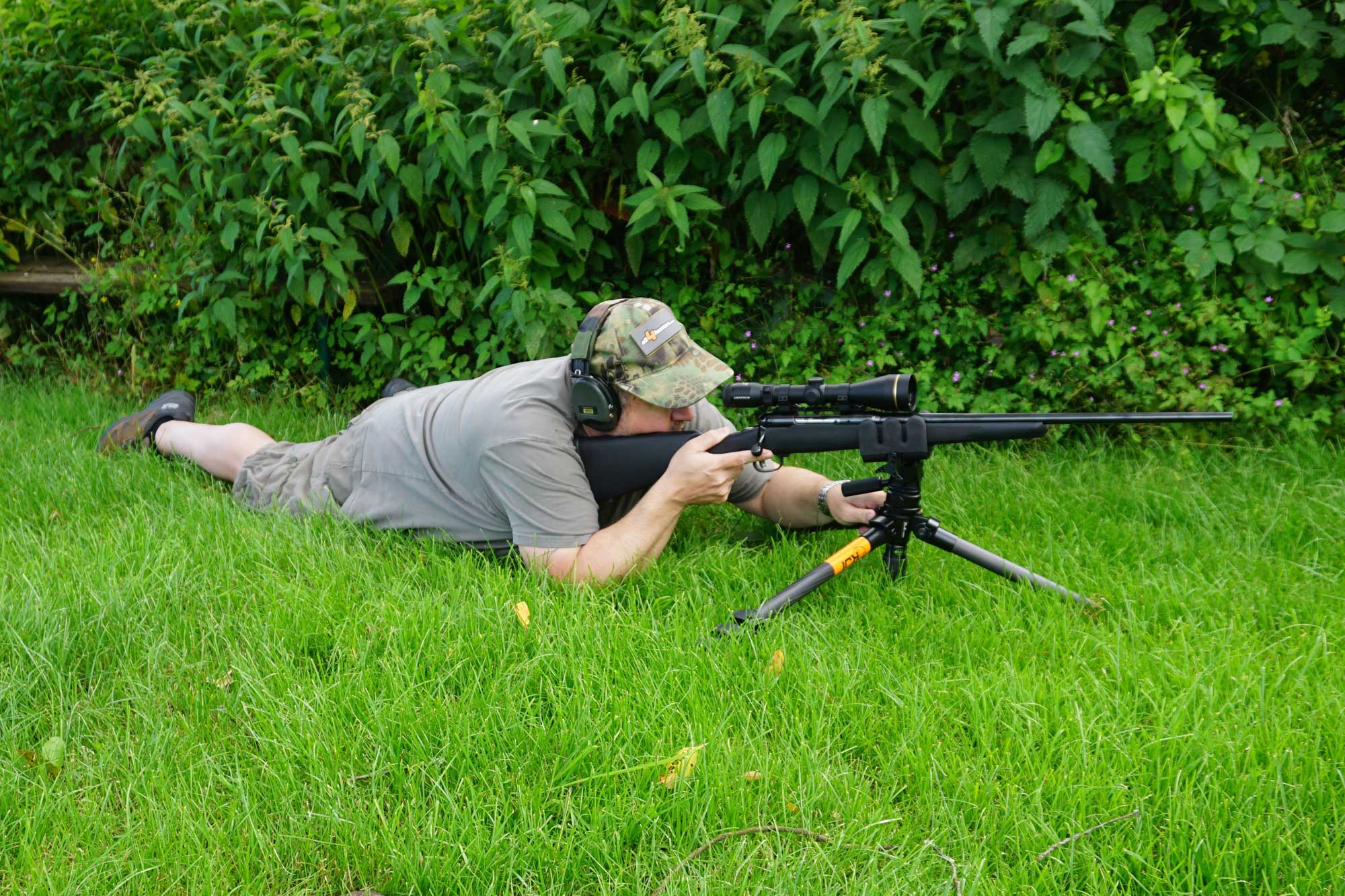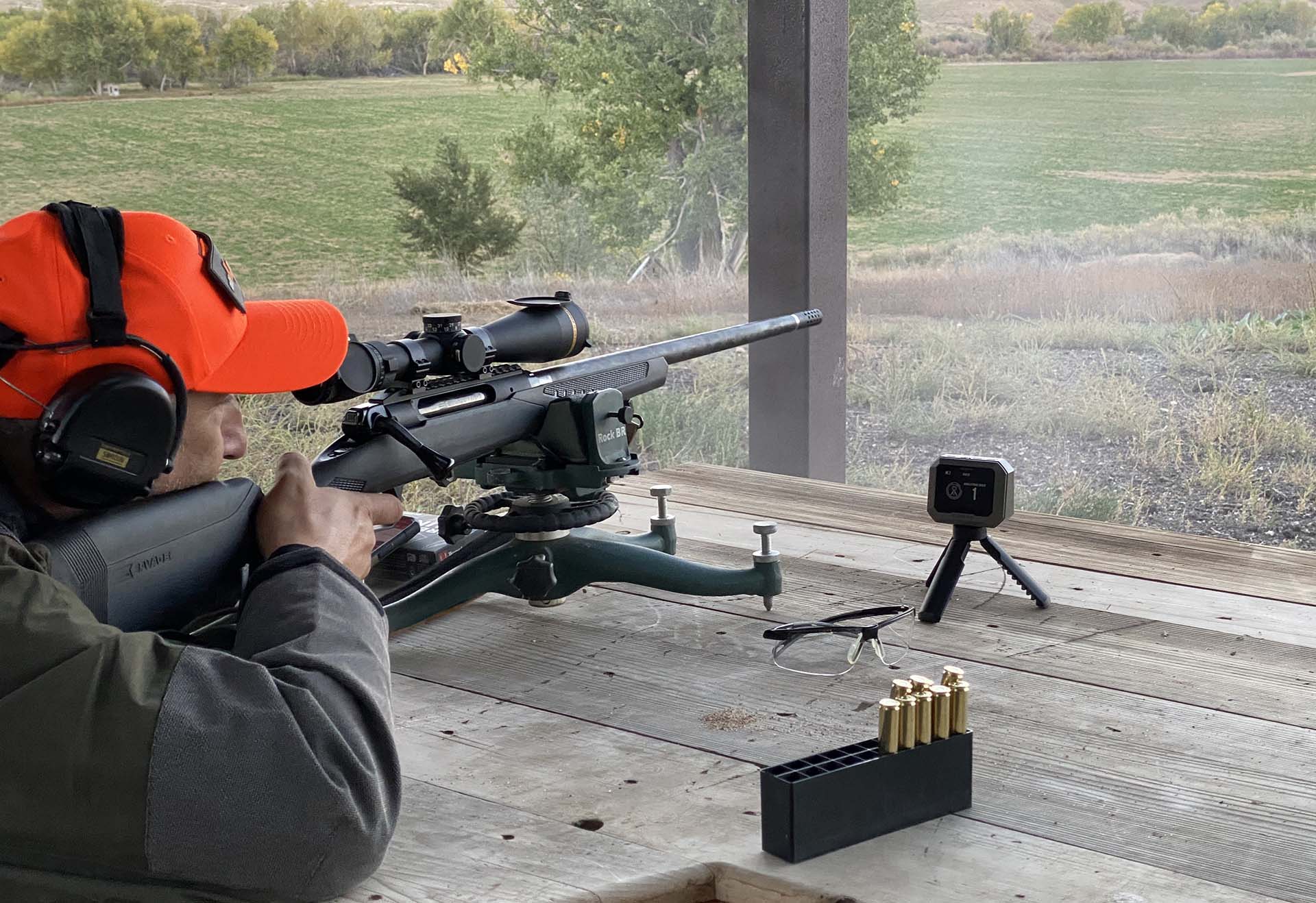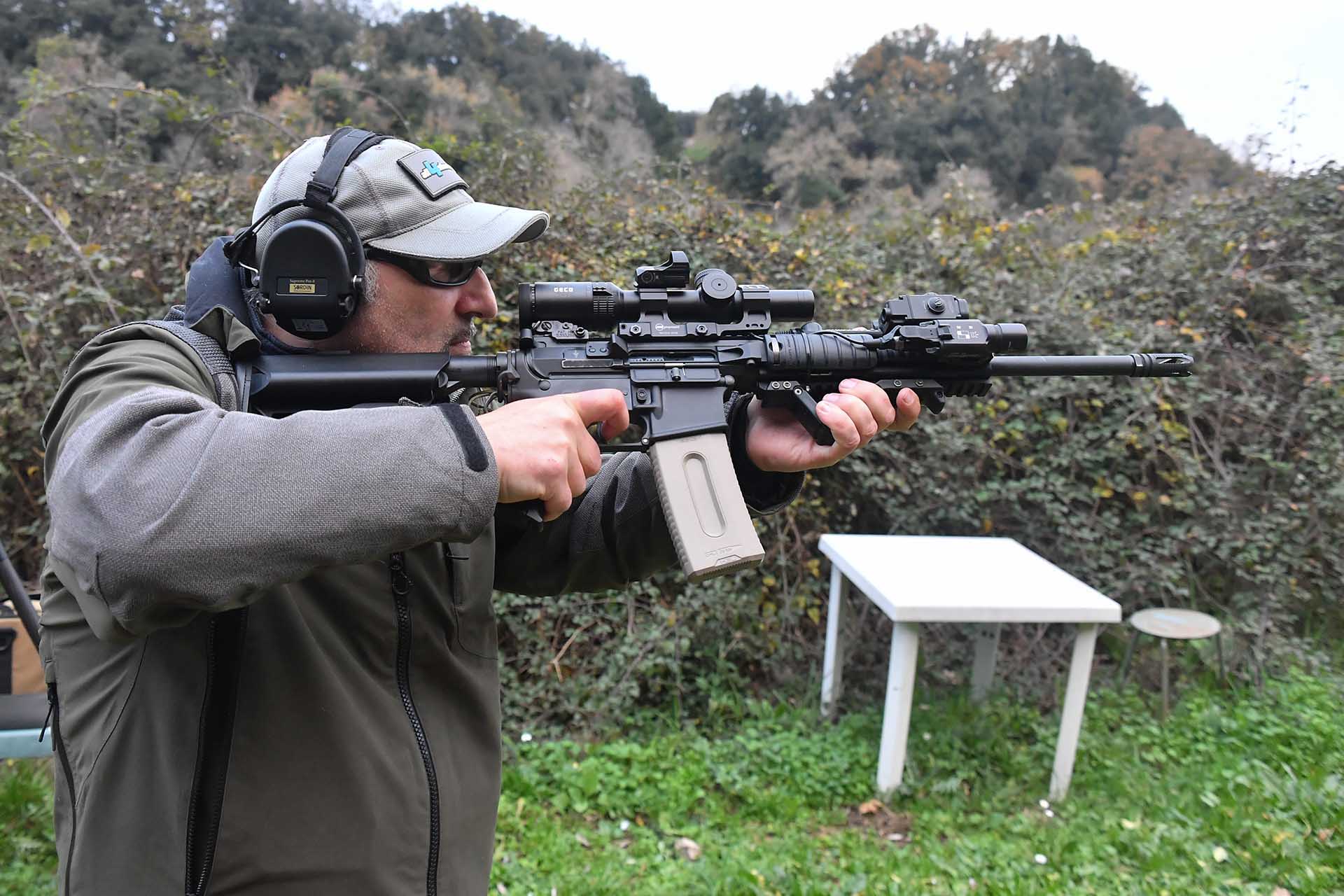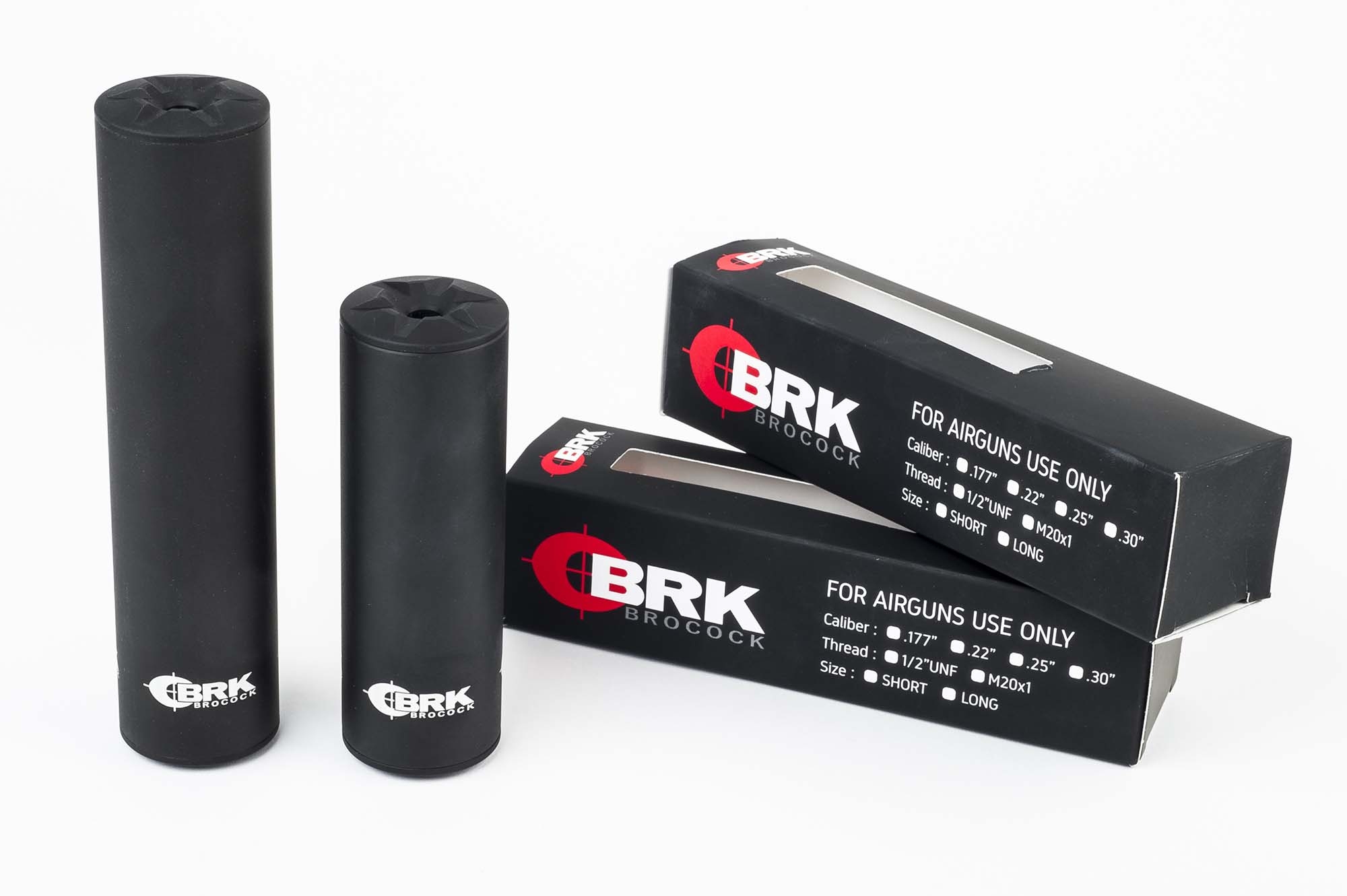Electronic powder dispensers are equipped with an integrated digital scale. You can enter the desired weight value and the equipment pours out the propellant charge from the powder reservoir. The closer the charge approaches the target value, the slower the unit trickles the powder. Shortly before the target value is reached, the devices switch over and trickle the last grains into the scale pan. These convenient devices facilitate reloading process immensely, require little space due to their compact design, and are easy to operate. Basically, these devices offer the possibility of working manually or in auto mode, although from our point of view only the automatic mode makes sense for reasons of efficiency. You set the device to the desired weight value, press start, the device ejects the weight value, when you put the empty scale pan back on, the scale zeros itself and the next charge is automatically ejected. For this reason, the operation of these devices is a little different: usually, you fill all the prepared cases on the loading board with powder, and then set the bullets.
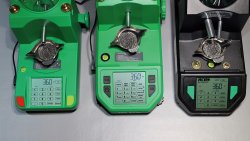
However, now the calibrated and primed cases are individually filled with propellant, and while the device is pouring out the next powder charge, you can set the bullet and perform the final check on the cartridge. In general, it should be noted that the devices are sensitive to vibration and drafts. Therefore, we recommend that they be placed on another table, away from the loading press, the operation of which causes vibration. It is also important to avoid drafts from heating or ventilation systems, to which these devices are very sensitive, as well as to temperature fluctuations. Manufacturers always recommend a warm-up and calibration time of around half an hour immediately before use. There are some new devices on the market with interesting features. Many manufacturers are focusing on controlling the devices via smart phone using an app with the Bluetooth interface. Some devices have different dispensing modes: here the user can select the most suitable one for the particular powder. The RCBS MatchMaster device, for example, also has the option of setting almost all dispensing parameters manually. Whether one needs this, remains to be seen. A very interesting innovation is the "Learn Mode". Devices that have this mode pour out the selected powder at different speeds and optimize the dispensing speed for the selected powder. Last but not least, the dispensing tubes of various devices can be completely removed for cleaning.

RCBS ChargeMaster Link
Weighing 0.85 kilograms and measuring a compact 26x12.8 cm, the RCBS ChargeMaster Link is equipped with two adjustable feet and a spirit level for leveling on the table and does not take up much space. The load cell has a capacity of 2,000 grains, a "Quick Warm Up" function and can be controlled via Bluetooth with your smartphone. The dispensing tube can be completely removed for cleaning. It is no longer threaded inside like the old units, but has a polygonal profile that is very easy to clean. The device has no memory function. The powder hopper holds about 800 grams of powder. The drain spout is on the side. The manufacturer states the accuracy as 0.1 grains. The device can be operated intuitively. The calibration, which is also simple, is performed with the two 50 gram calibration weights included in the scope of delivery, whereby the scale pan is never used here. Unfortunately, this simple powder dispenser does not have any different modes. Compared to the other two RCBS devices, handling is not as good, but at $299.99 (MSRP in the U.S.) it is the cheapest model in the test. If you are looking for a simple device without a lot of bells and whistles, you are in the right place here, because the inner values – i.e. precision and dispensing speed – are right. Unfortunately, the side drain spout is smaller in diameter than on the ChargeMaster Supreme and could be a bit larger, since powder draining is relatively slow.
RCBS ChargeMaster Supreme
The RCBS ChargeMaster Supreme is equipped with four adjustable feet and a spirit level for alignment on the table. Weight and dimensions can be found in the technical specs. The load cell has a capacity of 1,500 grains. The model has the same features as the RCBS ChargeMaster Link in terms of Quick Warm Up and Bluetooth function as well as the easily removable dispensing tube for cleaning purposes.
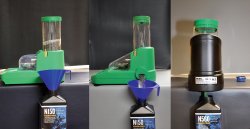
It has a memory function for 50 charges. The powder hopper holds about 950 grams of powder. The powder drain spout is on the side of the device. The manufacturer states the accuracy as 0.1 grains. The calibration also is the same as the ChargeMaster Link. The powder dispenser has two modes, "Normal" and "Learn". The latter mode dispenses powder at three speeds, thereby optimizing the output to the powder. This fast option always had the better accuracy in the test, except with the Swiss Reload RS40. The side drain spout has a larger diameter than on the ChargeMaster Link, and powder draining is much faster. This model, which is the successor of the old RCBS ChargeMaster Combo or RCBS ChargeMaster Lite, ranks in the middle class of RCBS equipment in terms of features and accuracy. It comes at an MSRP in the U.S. of $429.99 with a very good accuracy and very fast dispensing in Learn mode: a clear recommendation for the demanding reloader who appreciates modern features.
RCBS MatchMaster
In black instead of the RCBS house color green, the not-so-new flagship RCBS MatchMaster comes along. With the solid aluminum instead of plastic base, it reaches a weight of 1.8 kilograms. The load cell has a capacity of 1,000 grains. Here, too, you find the Quick Warm Up and Bluetooth features. The device is already equipped with two easy-to-disassemble high speed dispensing tubes, which, unlike the other two devices, do not have polygonal internal profiles. The small dispensing tube is smooth and the large dispensing tube has an internal thread. In addition, the model has a transportation protection mechanism that has to be deactivated before the first use. For this purpose, there is a screw in the side of the base that has to be unscrewed. The transportation protection mechanism must always be activated for any transport to prevent damage to the device.
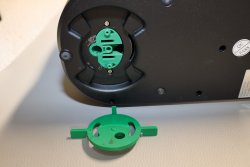
The dispenser has a memory function for 20 charges. The powder hopper holds approximately 800 grams of powder. The powder is drained at the bottom of the unit. For this purpose, the unit features a center of mass marking. You must align this with the edge of the table, then you can quickly drain the powder with the help of a plastic straw. To do this, you only have to unscrew the disc, whereby the opened drain is indicated with an acoustic signal. The manufacturer states the accuracy in Standard mode as 0.1 grains and in Match mode as 0.04 grains. The results in Match mode were not significantly better, so we chose the faster Standard mode for our test. These were already very good with an averaged standard deviation of 0.022 grains. Dispensing times in Match mode almost doubled in some cases.
The RCBS MatchMaster is lavishly equipped with four modes for speed selection. A reference table for orientation during selection is included in the operating manual. In addition, you can manually set many parameters, such as trickle operation of the dispensing tubes. Calibration with 20 and 50 gram calibration weights (as always without a scale pan) is just as quick and simple as with the other test devices. However, the lavish complete equipment of the top model also has to be paid for, at $899.99.
Test procedure for the 3 RCBS powder dispensers
All RCBS devices can be set to grains and grams, as well as operated in Auto or Manuel mode. The scale indicates too high or low charges with Under and Over, these can then simply be poured back into the powder reservoir. The warning tones can also be optionally switched off, which is not very useful, because then the notification tone is also missing when dispensing is done. All devices have a quick warm-up function, which takes 15 to 20 minutes. We selected five powder types to cover a wide range of loads. We tested fine ball powders with the new Hodgdon and Winchester propellants and rod powders in various grain sizes with the Reload Swiss and Vihtavuori grades.
- Load No.1 pistol load in 9mm Luger with 5.0 grains of Hodgdon CFE Pistol
- Load No.2 rifle load in .223 Remington with 23.0 grains of Reload Swiss RS40
- Load No.3 rifle load in .308 Winchester with 36.0 grains of Vihtavuori N150
- Load No.4 rifle load in .30-06 Springfield with 58.0 grains Winchester 6.5 StaBall
- Charge No.5 rifle load in .300 Winchester Magnum with 70.0 grains Vihtavuori N560
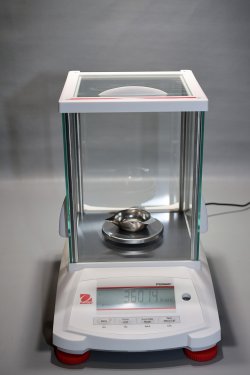
Each unit was warmed up at the beginning according to the operating instructions, then calibrated, after which the first 20 loads were not evaluated in the run-in phase. We tested each unit with 20 loads of each powder type. The loads were all checked on an Ohaus PX124 analytical balance. This lab balance has a linearity of 0.0002 grams/0.003 grains, so it certainly provides valid data for the statistics. If the RCBS ChargeMaster 1500, which seems nostalgic from today's point of view, still needed an average of 30 seconds for a powder charge of 36.0 grains of Vihtavuori N150, the new devices are in part significantly faster, with 12 to 29 seconds. RCBS engineers have also improved the operating noise level. Whereas the old ChargeMaster developed a noise level of around 68 db, the new devices are considerably quieter, at 40 to 56 dB, which in turn makes working more pleasant. With an averaged standard deviation of 0.022 grains, the top model MatchMaster is slightly ahead. The ChargeMaster Supreme follows with 0.029 grains in the speed-optimized Learn mode. The fast mode is by no means at the expense of accuracy. On the contrary, it is even better than the standard mode with 0.033 grains. The cheapest model, the ChargeMaster Link, came in third with a standard deviation of 0.034 grains. Considering that these values for the ChargeMaster Link model are still well below +/- 0.1 grains, we can confidently speak of top results in terms of measurement accuracy. Very important with these devices is the fact that the target and actual dispensed values match, because who benefits from the device if you select 30 grains, but the device always consistently dispenses 29.7 grains?
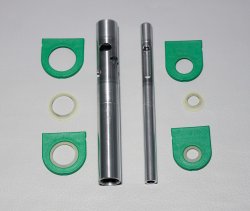
The all-clear can be given here, because the actual values matched the target values on all three devices. The devices had their problems with the low 9mm Luger powder charge – dispensing took a relatively long time compared to the medium and large charges. Whether a purchase is worthwhile for pure handgun shooters remains to be seen. In our opinion, the strengths of the digital devices lie in the medium and larger charge range from about 15 grains. Here they work very quickly and accurately – so reloading is fun! A small downer is the devices' static charge. While rod powders are unproblematic in this respect, fine ball powders get stuck everywhere inside. Cleaning, of the dispensing tube in particular, is quite a fiddly job, especially since the MatchMaster model's drain disc system never emptied without residue. Powder particles always got stuck here. We also tested all RCBS devices in app mode with the smartphone. The connection of the devices with the smartphone worked without any problems.
RCBS ChargeMaster Link, ChargeMaster Supreme and MatchMaster powder dispensers: wrapping-up
If you are looking for a simple product without a lot of bells and whistles, you are very well advised to go with the new ChargeMaster Link with slight compromises in handling. For the demanding reloader who wants more features and adjustment options, the new ChargeMaster Supreme model is a very good choice. Here you get a solid device that has a lot to offer in terms of features, such as the "Learn Mode". For the meticulous reloader with the appropriate budget, who strives for maximum accuracy, speed and manual adjustment options, the flagship MatchMaster can be highly recommended.



